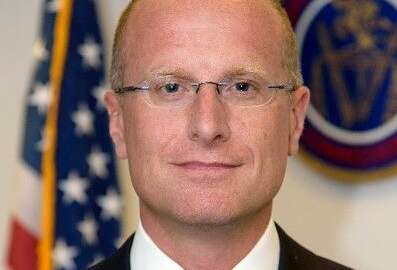

5G is about “the internet of everything,” according to Mitsuko Herrera, special assistant for Planning, Policy and Special Projects for Montgomery County,...
Like its predecessor 4G LTE, 5G has become a catch-all marketing term for the next generation of mobile networks. 4G is what linked smartphones to the internet, and before that it was 3G connecting computers to the web. Now, 5G is about “the internet of everything,” according to Mitsuko Herrera.

“All of our devices have little sensors and little connectivity that give back and forth data, and we leverage it,” said Herrera, special assistant for Planning, Policy and Special Projects for Montgomery County, Maryland, on Federal Monthly Insights — 5G Connected Government.
As program director for ultraMontgomery, a broadband economic development program in the county’s Department of Technology Services, her job is to help get residents, businesses, academia and the federal sector connected via high fiber networks.
“I think we have to kind of step back and understand that 5G is at the nascent stage,” she told John Thomas Flynn for Federal News Network. “So you really have a chicken and egg issue in that there are a lot of device manufacturers that are waiting for new spectrum to be deployed. There are a lot of carriers who are waiting for new equipment to be developed. So to some extent, we have some ideas, and right now what … really exist are the next iteration of what we already know, and [that] we’re at the cutting edge of things that we haven’t thought of before.”
Herrera said 5G is both a technology and a new spectrum. As the former, it is designed to put antennae closer to devices.
Montgomery County has three wireline broadband providers for residential networks and about 10 to 15 providers for commercial networks. She expected to see more competition among providers for faster broadband speeds or products as a result.
But from a local government perspective, Herrera said more leveraging of sensors and data is likely. That means the people who work for those governments should be more circumspect.


 Exclusive
Exclusive Embracing 5G also means more base stations and replacing towers. Right now, several local jurisdictions around the country are pushing back against a draft ruling by the Federal Communications Commission in September to limit local governments’ authority over installation of cell towers and the fees they can collect from carriers. The county has since sued the FCC as a result, The Montgomery County Sentinel reported. Herrera said she found the ruling unfortunate because in the end, local governments will be some of the biggest customers of 5G.
Meanwhile, she said carriers need to have an obligation to build in more underserved areas rather than already built-up urban areas. But design also has to be beautiful, not just functional, she said. That’s especially important in neighborhoods which increasingly put their utilities underground.
Copyright © 2025 Federal News Network. All rights reserved. This website is not intended for users located within the European Economic Area.
Amelia Brust is a digital editor at Federal News Network.
Follow @abrustWFED
